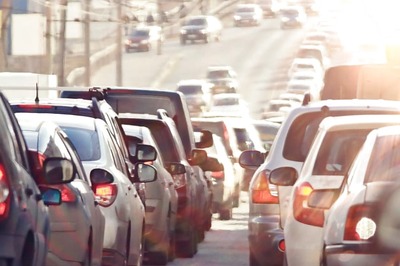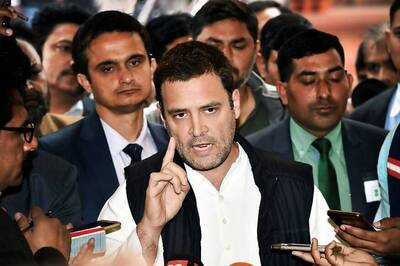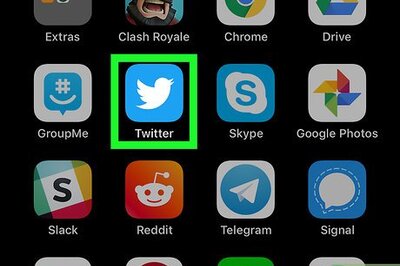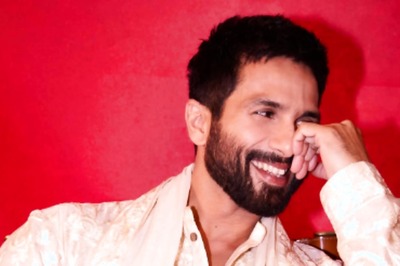
views
People, Left, Right or Centre, would possibly agree that an internally weak country can’t negotiate with the rest of the world from a position of strength. Internal strength of a country cannot be measured just in terms of resources at its disposal, military power, technological expertise and production capacity. Strength of its people is a country’s biggest asset. Economic empowerment of the masses is critical to emergence of a strong India.
Waking up to this reality like the rest of the world, India became a signatory to the United Nations Millennium Development Goals (MDGs) in 1990. The first goal is to halve, between 1990 and 2015, the proportion of people whose income is less than one dollar a day. In 1990, 37.5 per cent of Indian people were living below the poverty line, measured by the old standards. The bigger goal is to halve, between 1990 and 2015, the proportion of people who suffer from hunger.
According to the new poverty marker arrived at by the expert group on methodology for estimation of poverty, appointed by the Planning Commission and chaired by Professor Suresh D. Tendulkar, a person who could spend Rs 446.68 and Rs 578.8 in a month in rural and urban India respectively at the 2004-2005 price levels, is to be considered above the poverty line(See Table 1 at the end of the article). So in 2004-2005, if a landless tiller could spend Rs 15 a day and a migrant labourer in a city Rs 19, they had risen above the abyss of poverty. By a liberal extension of the same logic, a person today is not poor if he can spend Rs 24 in a village and Rs 30 in a city.
These figures are as absurd as they can get. In Delhi, people pay Rs 15 for a one-way bus ticket. So a man who makes Rs 30 a day in Delhi may travel to work and back, buy and eat nothing but he still not will be considered poor.
Even if one were to accept the new yardstick, we find that at the all-India level, the revised poverty headcount ratios in 1993-94 are 50.1 per cent in rural areas, 31.8 per cent in urban areas and 45.3 per cent in the country as a whole (See Table 2). By applying the same benchmark, the corresponding figures for 2004-2005 are 41.8, 25.7 and 37.2 per cent respectively.
Considering the population increase in the country, one should not be surprised if the actual number of poor people has in fact gone up.
If the UPA government’s intention behind sanctioning the study for devising a new methodology was to paint a rosy development picture, it has surely backfired.
A recent world Bank study says, "India has maintained steady progress in reducing poverty as measured by consumption. Using the Government of India's official poverty lines, in 2004–05, 28 per cent of people in rural areas and 26 per cent of people in urban areas lived below the poverty line, down from 47 per cent and 42 per cent, respectively, in 1983. Improvements in the last two decades represent a continuation of a long-term secular decline of both urban and rural poverty under way in India since the 1970s."
So the new benchmark sees the Indian poor perform worse than the old figures which were measured in terms of consumption.
The government has launched many initiatives that should have helped bring down the poverty figures, for example, in areas of rural infrastructure (Bharat Nirman), employment (National Rural Employment Guarantee Act), education (Sarva Shiksha Abhiyan), rural health (National Rural Health Mission), and urban infrastructure (National Urban Renewal Mission).
But utter lack of political will, an inept bureaucracy, corruption at multiple layers and local turbulences have contributed to the shoddiest implementation of the schemes.
A few months back, I had the opportunity of visiting a free kitchen run by Akshaya Patra Foundation, a part of the ISKCON movement, at its Vrindavan centre. The kitchen cooks hygienic and nutritious meals for 169379 school children every day.
They run 17 free kitchens in eight states of India feeding more than 1.26 million school children. It is the largest school lunch programme run by a non-profit organization in the world. I met school headmasters in a few of the schools in and around Vrindavan and they all said that enrolment and attendance had gone up significantly.
They started by feeding 1500 children in 2000. And the best part is that 65 per cent of their funds come from the government.
However, in case of government-run school lunch programmes, complaints range from siphoning off funds to rotten food being served. So is public-private partnership the only way forward in this situation?
India continues to be one of the hungriest nations in the world. It is ranked 67th out of 84 countries listed and ranked on the Global Hunger Index report, 2010. India accounts for 42 per cent of the world's underweight children.
Unless India ensures food security for its people, its claim for a greater role in the world will be taken with a pinch, if not a lump, of salt. In that regard, universalisation of the Public Distribution System (PDS) is the simplest and surest way to ensure food security.
Dr Abhijit Sen of the Planning Commission had proposed a minimum support price-linked PDS scheme, excluding 25 per cent of the population who are not the target group. But this was shot down by C Rangarajan, chairman of the Rangarajan Committee, who thought that streamlining the present PDS system was enough.
Though the government has made up its mind on the proposed Food Security bill, it is not too sure if universalisation of PDS would be a viable measure.
A study by Praveen Jha, Associate Professor at Jawaharlal Nehru University (JNU) and Nilachal Acharya of the Delhi-based Centre for Budget Governance and Accountability (CBGA), show that Universalisation of PDS is not an extremely expensive proposition. Their study has put forward two proposals.
Under the first one, an additional Rs 94419 crore per annum will be required to supplement the present provisions of food subsidy (See Table 3).
Under the second, an additional Rs 84399 crore will be needed to achieve universalisation of PDS (See Table 4).
When the Centre allocates Rs 10000 crore for a new airport, Rs 40000 crore for the Commonwealth Games and can write off more than Rs 150000 crore lost in the 2G Spectrum scam, this should not be an impossible investment. The 2010 Union Budget made provisions to write off Rs 500000 crore for the super-rich corporate houses.
Universalisation of the public distribution system can come at a fraction of these costs and with the economy growing at over 8 per cent, availability of money is not really an issue. The UPA government seems committed to the Food Security Bill but it is wavering on the subject of universalisation of PDS.
The UN country report on India, specific to the MDGs, released in late 2010, do not paint a rosy forecast at all.
While it is possible that India would reach the target of halving its poverty by 2015, states in the Hindi heartland - Uttar Pradesh, Bihar, Madhya Pradesh, Chhattisgarh, Jharkhand, Uttarakhand apart from Maharashtra and Orissa are likely to put a spanner in the works, the report says.
The report reads, "India accounts for 50 per cent of the world's hungry. Over 46 per cent of Indian children are undernourished."
Rising inequalities, inefficient delivery of public services, lack of implementation on the ground and huge variance between coverage of urban and rural areas are emerging as the principal bottlenecks.
A country of poor people, plagued by hunger and the lack of development, is internally weak. It can’t aspire to go out to face the world with confidence. With 2015 becoming less distant with every passing day, time is definitely not on India's side.
Rahul Gandhi, the Congress scion, said a while back: "What is important is that we stop worrying about how the world will impact us, we stop being scared about how the world will impact us, and we step out and worry about how we will impact the world." However, the government his party leads would do well to ensure that 1.3 billion people get to eat before the country decides to step out. For, weak feet would not be able to go the distance.
(The writer is Editor, Special Editions, at Network 18)####



















Comments
0 comment